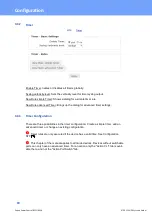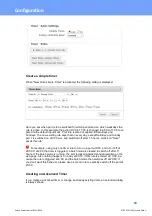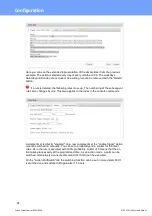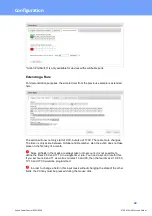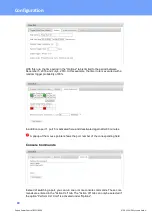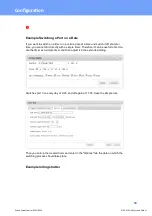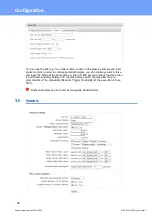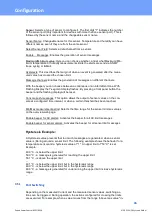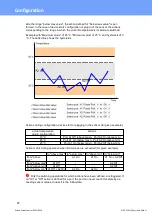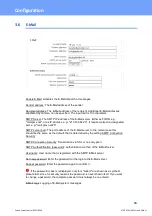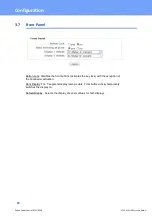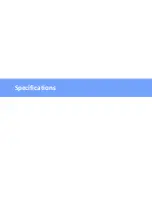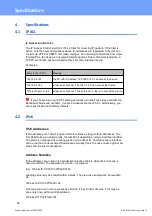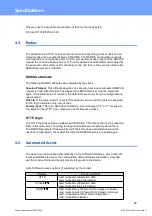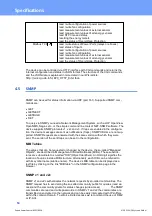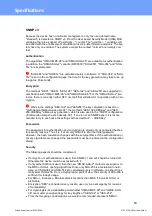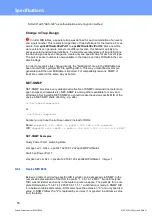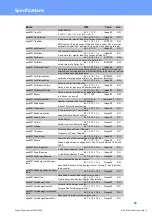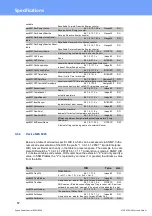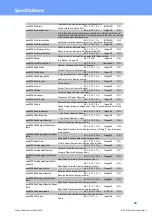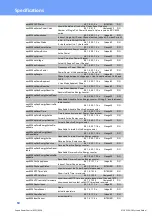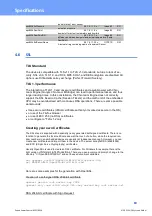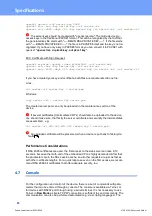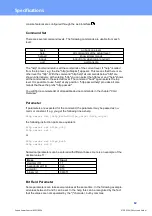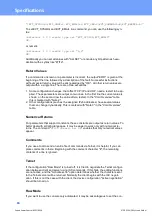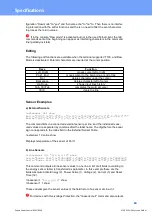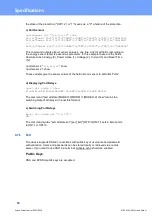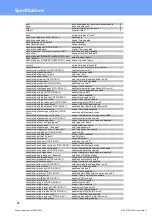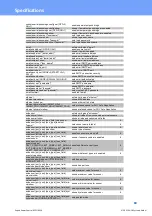
53
Expert Power Control 8221/8226
© 2021 GUDE Systems GmbH
Specifications
read / write configuration of power sources
read / write fan configuration
read measurement values of external sensors
read measurement values of all energy sensors
read NTP time and status
resetting the energy meters
read the status of Overvoltage Protection
read / write status of Power Ports (relays or eFuses)
read status of Inputs
read / write configuration of power sources
read / write fan configuration
read measurement values of external sensors
read measurement values of all energy sensors
read the status of Overvoltage Protection
The device can be controlled via HTTP interface with CGI commands and returns the
internal configuration and status in JSON format. The structure of the CGI commands
and the JSON data is explained in more detail in our Wiki article:
http://wiki.gude.info/EPC_HTTP_Interface
4.5
SNMP
SNMP can be used for status information via UDP (port 161). Supported SNMP com-
mands are:
·
GET
·
GETNEXT
·
GETBULK
·
SET
To query via SNMP you need a Network Management System, such as HP OpenView,
OpenNMS, Nagios etc., or the simple command line tools of NET-SNMP software. The
device supports SNMP protocols v1, v2c and v3. If traps are enabled in the configura-
tion, the device messages are sent as notifications (traps). SNMP Informs are not sup-
ported. SNMP Requests are answered with the same version with which they were
sent. The version of the sent traps can be set in the configuration.
MIB Tables
The values that can be requested or changed by the device, the so-called "Managed
Objects", are described in Management Information Bases (MIBs). These substruc-
tures are subordinate to so-called "OID" (Object Identifiers). An OID digit signifies the
location of a value inside a MIB structure. Alternatively, each OID can be referred to
with its symbol name (subtree name). The device's MIB table can be displayed as a
text file by clicking on the link "MIB table" on the SNMP configuration page in the
browser.
SNMP v1 and v2c
SNMP v1 and v2c authenticates the network requests by so-called communities. The
SNMP request has to send along the so-called community public for queries (read ac-
cess) and the community private for status changes (write access)
. The SNMP
communities are read and write passwords. In SNMP v1 and v2 the communities are
transmitted unencrypted on the network and can be easily intercepted with IP sniffers
within this collision domain. To enforce limited access we recommend the use of DMZ
or IP-ACL.
85
Summary of Contents for Expert Power Control 8221 Series
Page 2: ...2 Expert Power Control 8221 8226 2021 GUDE Systems GmbH ...
Page 5: ...Device Description ...
Page 13: ...13 Expert Power Control 8221 8226 2021 GUDE Systems GmbH Device Description ...
Page 14: ...Operating ...
Page 24: ...Configuration ...
Page 50: ...Specifications ...
Page 91: ...Support ...

